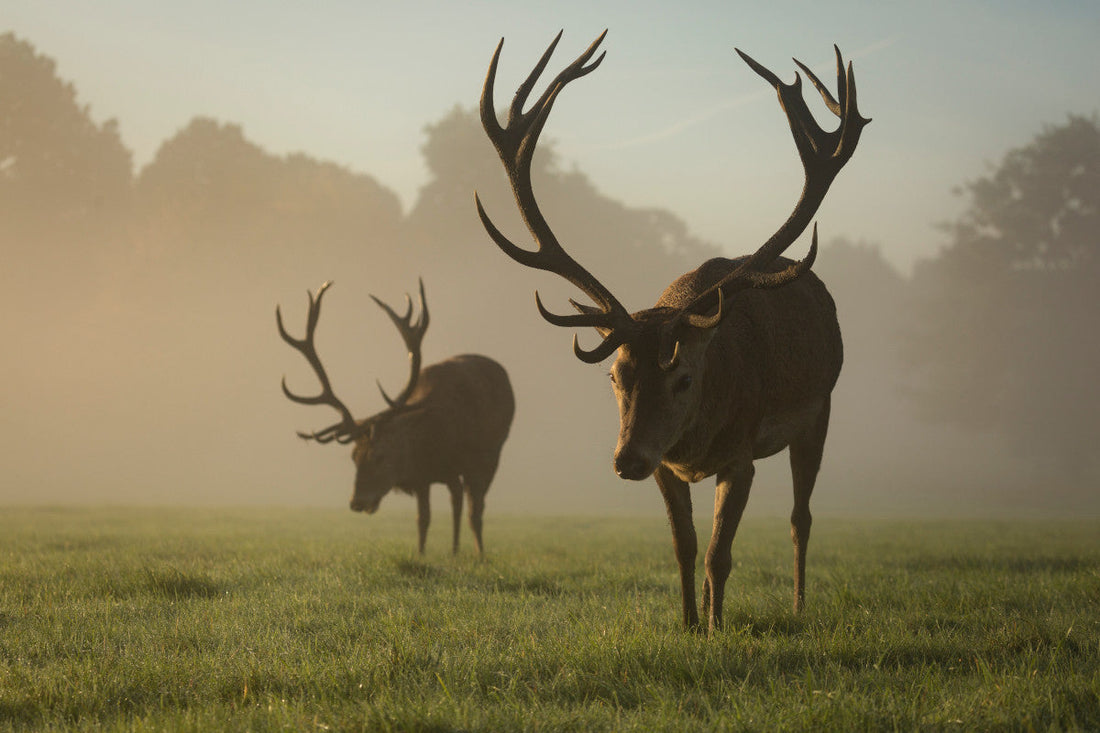
Mastering Elk Jerky: Top Cuts and Expert Tips
Chad MathewsShare
Why Cut Matters
The cut of elk meat you choose for jerky significantly influences the final product's flavor and texture. Each cut, from the tender loin to the more robust bottom round, offers a unique experience. Lean cuts tend to absorb marinades better and provide a satisfying chew, while those with a bit more fat can enhance flavor, creating a delightful balance in every bite.
Quality matters just as much as the cut itself. Elk that have grazed on nutrient-rich pastures yield meat that is not only healthier but also richer in taste. Factors like the animal's age and the butchering process further impact the meat's quality. By selecting the right cut and ensuring high-quality meat, you set the stage for crafting exceptional elk jerky that showcases the natural flavors and textures of this game meat.
Quality of Elk Meat
Elk meat is renowned for its exceptional quality, offering a unique flavor profile that sets it apart from other meats. The natural diet of elk, consisting of nutrient-rich grasses and plants, contributes to its rich taste and lean texture. This quality is essential for crafting delicious jerky, as the inherent flavors of the meat shine through, making every bite a savory delight.
When selecting elk meat for jerky, the cut plays a crucial role in determining the final product's texture and flavor. Cuts like the top round and flank are favored for their balance of tenderness and chewiness. Each cut brings its own distinct characteristics, allowing jerky enthusiasts to tailor their creations to their personal preferences, whether they seek a softer bite or a more robust chew.
The quality of elk meat is also influenced by the animal's age and how it is processed. Proper aging allows enzymes to enhance the meat's flavor and tenderness, while careful butchering ensures that the cuts maintain their integrity. This attention to detail is vital for producing jerky that not only tastes great but also has a satisfying texture that keeps you coming back for more.
Ultimately, the journey of making elk jerky begins with sourcing high-quality meat. By choosing the right cuts and understanding the nuances of elk meat, you can create a jerky experience that is both flavorful and memorable. Whether you opt to make your own or indulge in expertly crafted jerky from a trusted source, the quality of elk meat remains the cornerstone of this delicious endeavor.
Top Cuts for Elk Jerky
When it comes to crafting elk jerky, selecting the right cuts is essential for achieving the perfect balance of flavor and texture. The top round, known for its lean profile, offers a satisfying chew while allowing marinades to shine. Similarly, the flank cut provides a distinct grain that enhances chewiness, making it a favorite among jerky enthusiasts.
The sirloin cut, taken from the mid-rear of the elk, combines tenderness with rich flavor, making it ideal for those who appreciate a savory bite. Meanwhile, the eye of round, with its cylindrical shape, ensures uniform tenderness and excellent marinade absorption. Lastly, the bottom round, though slightly tougher, delivers a robust chew that many jerky lovers find appealing.
Ultimately, the quality of the elk meat plays a crucial role in the final product. Elk that has grazed on quality pastures yields meat that is not only healthier but also richer in taste. By choosing the best cuts and ensuring high-quality meat, you can elevate your elk jerky-making experience to new heights, creating a delicious snack that showcases the unique flavors of this game meat.
Cutting Techniques
Cutting techniques play a crucial role in the jerky-making process, especially when working with elk meat. The choice of cut significantly influences the texture and flavor of the final product. For instance, cuts like the top round and flank provide a balance of tenderness and chewiness, while the sirloin offers a richer taste due to its slight marbling. Understanding the unique characteristics of each cut can elevate your jerky experience.
Moreover, the direction in which you slice the meat—against or with the grain—affects the chewiness of the jerky. Thin slices dry faster and yield a crispier texture, while thicker cuts retain more moisture and flavor. Consistency in slicing is essential to ensure even drying, which ultimately enhances the overall quality of your elk jerky.
By mastering these cutting techniques, you can create a delicious and satisfying jerky that showcases the natural flavors of the elk.
Marinating Elk Meat
Marinating elk meat is essential for enhancing its natural flavors and achieving the perfect jerky. The choice of cut significantly impacts the texture and taste, with options like top round and flank offering unique characteristics. A well-balanced marinade, ideally left to infuse for 12 to 24 hours, complements the elk's gamey profile, creating a deliciously savory treat.Expert Tips for Perfect Jerky
Creating the perfect elk jerky begins with selecting the right cuts of meat. Top round and flank are popular choices, offering a balance of tenderness and flavor. The grain direction of the meat also plays a crucial role; cutting against the grain yields a more tender bite, while cutting with it provides a chewier texture. Understanding these nuances can elevate your jerky-making experience.
Quality matters just as much as the cut. Elk that has grazed on rich pastures produces meat with a deeper flavor profile. Proper aging and butchering techniques further enhance the meat's taste and tenderness. When combined with a well-crafted marinade, the result is a delicious jerky that showcases the unique characteristics of elk meat, making each bite a savory delight.
